In mid-October 2019, Lamborghini reported a production milestone: Huracan number 14,022. That seemingly random figure brought the Huracan, in just five years, level with its predecessor Gallardo’s total production over 10 years – and made the Huracan the most successful model in Automobili Lamborghini’s 56-year history.
That figure is also roughly equal to all the Lamborghinis built from 1963 up to the Gallardo’s introduction in 2003.
Back in the day, it didn’t take much to be a Lamborghini production record holder. Consider the Countach, ubiquitous on bedroom walls around the world – yet just 2049 built, over 26 years. And before that, the Lamborghini Espada, a runaway sales success with a measly 1227 examples over 10 years.
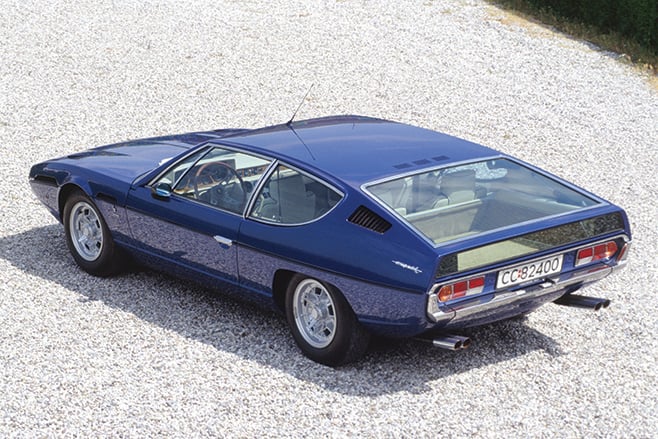
Introduced at the 1968 Geneva Salon and named for a bullfighter’s sword, the Espada was only Lambo’s fourth model. It had been previewed a year earlier as the Marzal show car, designed by Bertone’s Marcello Gandini to a four-seater brief from Ferruccio Lamborghini himself.
The production Espada would lose the Marzal’s transverse rear-mounted engine, dramatic glass gullwing doors and honeycomb-louvred rear engine cover. Chassis designer Giampaolo Dallara installed the 3.9-litre quad-cam V12 and five-speed manual gearbox up front in a fabricated steel chassis, marking a departure from the earlier 400 GT’s ladder frame.
The steel body’s tall roofline allowed generous rear headroom. Rearward visibility was aided by large side windows and a vertical glass panel beneath the tailgate. The large clamshell bonnet, extending down to the shoulder line, was forward-hinged for engine access. NACA ducts fed air to the cabin.
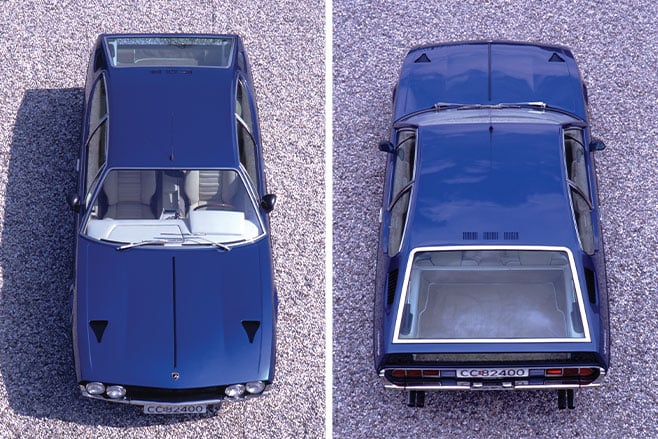
Selling alongside the hero Miura (1966-’73), the Espada didn’t claim to be the performance flagship: compared with the 400 GT it superseded, the Espada was longer, wider and more than 160kg heavier, at 1635kg. Still, the 0-100km/h sprint was dispatched in a swift seven seconds, and top speed was 250km/h.
There are three recognised series of the Espada, the S1 giving way in 1970 to the S2 with a Miura-spec engine raising power from 242 to 260kW, and introducing vented disc brakes, restyled grille and a (thankfully) revised dashboard. The 1972 S3 copped a more significant interior freshen-up – and replaced Fiat 124 tail-lights with Alfa Romeo GTV2000 units, just for the record.
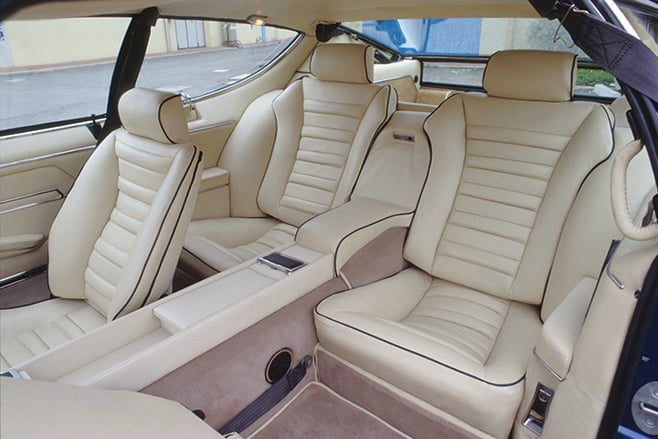
Power play
Ferrari defector Giotto Bizzarrini designed Lambo’s V12, an all-alloy, 60-degree, quad-cam with six Weber carbs. Capacity hit 3929cc for Espada, and high-compression S2 raised power to 260kW at 7500rpm/393Nm at 5500rpm. Wishbone and coil suspension; four discs behind 15-inch Campagnolo alloys. Three-speed Chrysler auto option arrived in ’74.
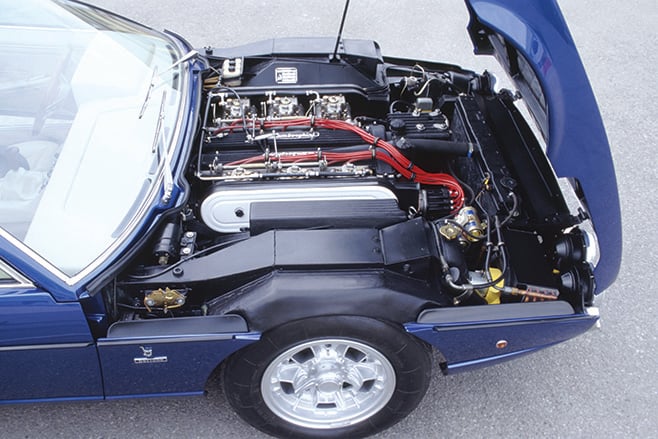
Cutting a dash
The early Espada dash was a Marzal-esque mangle, improved in S2, more so in ‘wrap-around cockpit’ S3 (pictured). Tall transmission tunnel allowed four-adult comfort in the leather-trimmed interior, with Ford-sourced vents and BMC Mini column stalk. Rear side windows were top-hinged, and air-con and power steering standard. from ’72.
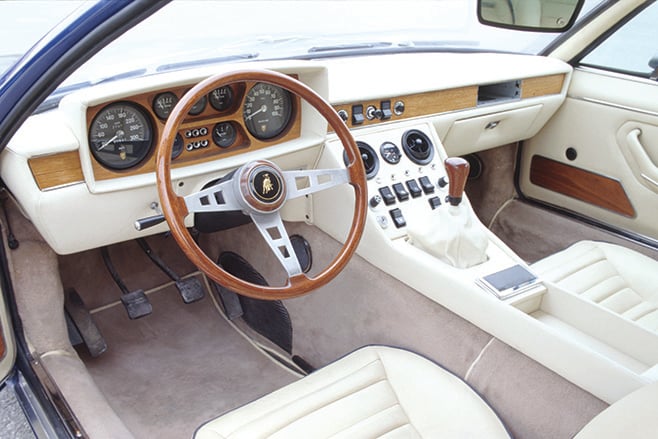
1968 Lamborghini Espada by the numbers
- 1227 Espadas built, a Lambo record until Countach (2049)
- 187 S1 cars built (versus 575 x S2 and 465 x S3)
- A$235,000 price guide for ’77 S3, Classic Throttle Shop, October 2019
- 100mm longer than the 400 GT 2+2 yet a proper four seater






